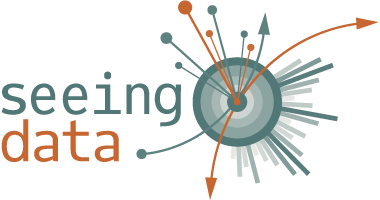Home » Taking time with visualisation » Home » Sophisticated readings
Taking time with visualisation
7 ways to become a more sophisticated reader
Becoming a more sophisticated reader of visualisations requires you to think about things that are neither outside nor inside the chart, but that help you to think critically about the visualisation.
1. Reward vs. effort
Not all visualisations are easy or quick to read. Some take time and effort whilst others may look straightforward, but on closer inspection be more complex than first thought. You may need to read a lot of information around the outside of the chart to understand it. It could be that you are unfamiliar with the chart type and it takes some getting used to. The visualisation designer should provide you with enough guidance to read the visualisation, but you should expect to make a little effort.
2. ‘Understanding’ can come in different shapes and sizes
Not every visualisation will deliver a ‘Hollywood’ moment of discovery. You may make a major discovery that helps you to make a critical decision, but more typically you may learn just a little more about a subject. The visualisation might simply confirm or reinforce something you already knew.
3. Overview first, details if provided
Sometimes a visualisation is only intended to give you the gist: a sense of which values are big, medium and small and the patterns they create. Reading specific values is not the aim with these visualisations. If you can’t instantly read the precise values from a chart, don’t get frustrated. It may be that the chart wasn’t intended for such detailed reading. In many cases the precise values are available via the link to the data source.
4. Value added?
Don’t forget that a visual portrayal of data aims to reveal magnitudes, patterns and relationships that the data alone cannot easily achieve. A weak visualisation is one that adds no value to the data and leaves you simply wanting to see a table of values rather than a visual portrayal of it.
5. Data questions answered/unanswered
If your questions about a subject are not answered by the visualisation, this doesn’t make it a bad visualisation (e.g. “this is great but I wish they’d shown it by year…”). A visualisation can only show so many different angles of data analysis. It may not have been possible to include those areas you feel are missing, or the designer may have deemed them less interesting than the information provided.
6. Appreciation of context
When reading a visualisation, try to imagine some of the challenges or constraints faced by the designer. For example, if the size of the text is frustratingly tiny on your screen, could it have been intended to work primarily as a poster? Would it have been the right size in its native format? If you’re thinking ‘this would have been better on a map’, could it be that the visualiser did not have access to spatial data? Or perhaps that the geographical details were too vague or inaccurate?
Are you the intended audience? If you are struggling to understand a visualisation it could be that the project was aimed at specialists, people with specific knowledge about the subject. If so, your struggles do not mean that it is a bad visualisation – it just wasn’t intended for you. You might not find the subject matter interesting, but other people might. You have the right not to read a visualisation!
7. What would you do differently?
What would you have done differently? How would you imagine an alternative way to represent the data? What other questions would you have focused on?
